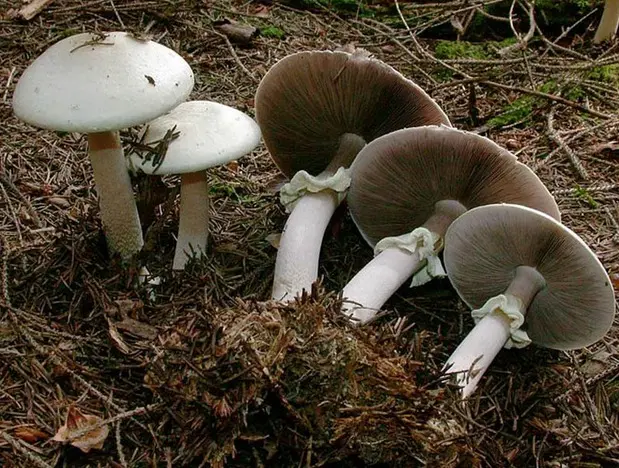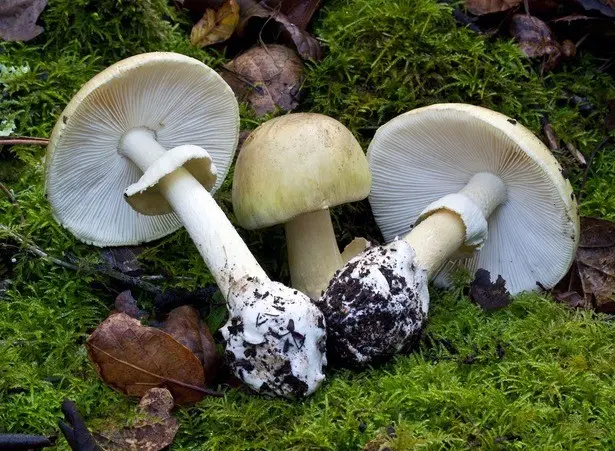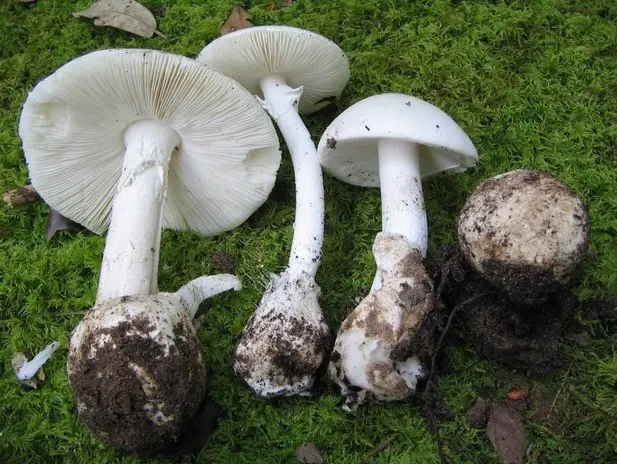Contents
Having memorized the photo and description of the champignon (Agaricus sylvicola), it will be difficult to confuse it with the deadly poisonous pale grebe or white fly agaric. Champignon growing in the forest is not inferior to store-bought mushrooms, it is just as tasty and fragrant, and deserves the attention of mushroom pickers.
What does champignon look like

At a young age, the champignon is small in size. Due to the graceful silhouette, it is also called thin. The hat of adult specimens reaches 10 cm in diameter. In young fruits, it has the shape of a hemisphere, in which the plates are not visible due to the protective cover. Then it becomes convex-prostrate and slightly rough due to thin scales on its surface. The hat is of the correct rounded shape, white with a grayish tinge, it turns slightly yellow when touched. Rare tiny scales are visible on it, even in wet weather it seems dry – this is a characteristic feature inherent in the species.
The plates are very frequent, they begin to gray at a young age, then turn purple and finally almost black. Leg – up to 10 cm in length, slightly hollow, its color is white with a yellowish or grayish tint.
The stem is straight and rather long. From top to bottom, it expands slightly, but never grows from the vulva – this is the main difference between copse mushroom and grebe. The pulp is white, on the cut it acquires a yellowish tint, it has a pleasant smell, similar to anise. The cap is rather thin in specimens growing in the shade of fir trees and other trees, in more open places it is fleshy.
Where does champignon grow
Coppice mushrooms prefer fertile soils rich in humus. They are found in deciduous forests, spruce forests and even city parks. These mushrooms grow most often in numerous groups, sometimes they form witch circles. You can collect them from June to September inclusive.
Is it possible to eat champignon
Woodland champignons are just as tasty as store-bought ones. They belong to conditionally edible varieties. They can be:
- fry;
- stew;
- bake;
- cook;
- dry;
- freeze;
- marinate;
- salt.
They have a pleasant aroma typical of mushrooms.
Mushrooms should not be given to children under six years of age, they are difficult to digest by the child’s body. Their use is undesirable for people with diseases of the gastrointestinal tract, food allergies, liver pathologies.
False doubles
Woody champignon is confused with pale grebe. The main differences of champignon:
- a rough hat of a grayish color (in a toadstool it is smooth, with a greenish tinge).
- the plates are colored (in the toadstool they are white);
- the leg is rough, grows directly from the ground (in the pale grebe it is smooth, sometimes with a moire pattern, and grows from the vulva);
Pale grebe is deadly poisonous, it contains toxins that destroy the liver, stomach and kidneys. When eaten, death occurs in 90% of cases.

Sometimes inexperienced mushroom pickers confuse champignon with white fly agaric – a deadly poisonous species. You can distinguish these mushrooms by the color of the plates, looking under the hat. In white fly agaric they are white, and in champignon they are always colored even at a young age. It gives out fly agaric and an unpleasant, repulsive smell of bleach.

Rules for collection and use
Woody champignon is harvested all summer and the first month of autumn in the forest, away from industrial zones and roads, in prosperous ecologically clean regions. Mushrooms are carefully twisted out of the ground, keeping the mycelium intact, then in a few days new ones will begin to grow in place of the plucked specimens. In addition, this method of collection allows you to see the vulva at the base of the leg, which is characteristic of pale grebes and fly agarics, and throw out the inedible mushroom in time.
At home, at copse mushrooms, they cut off the bases of the legs contaminated with soil, clean the skin on the hat, wash and boil. Young specimens can be eaten raw, adding to vegetable salads. Mushrooms are best processed immediately upon arrival from the forest; long-term storage reduces their nutritional value.
Conclusion
A photo and description of the champignon will help to distinguish this mushroom from deadly poisonous counterparts. Mushroom pickers highly appreciate this species for its excellent taste and aroma, versatility of culinary use. If you pick mushrooms in the forest correctly, you can come to the same clearing several times and find a rich harvest there.









